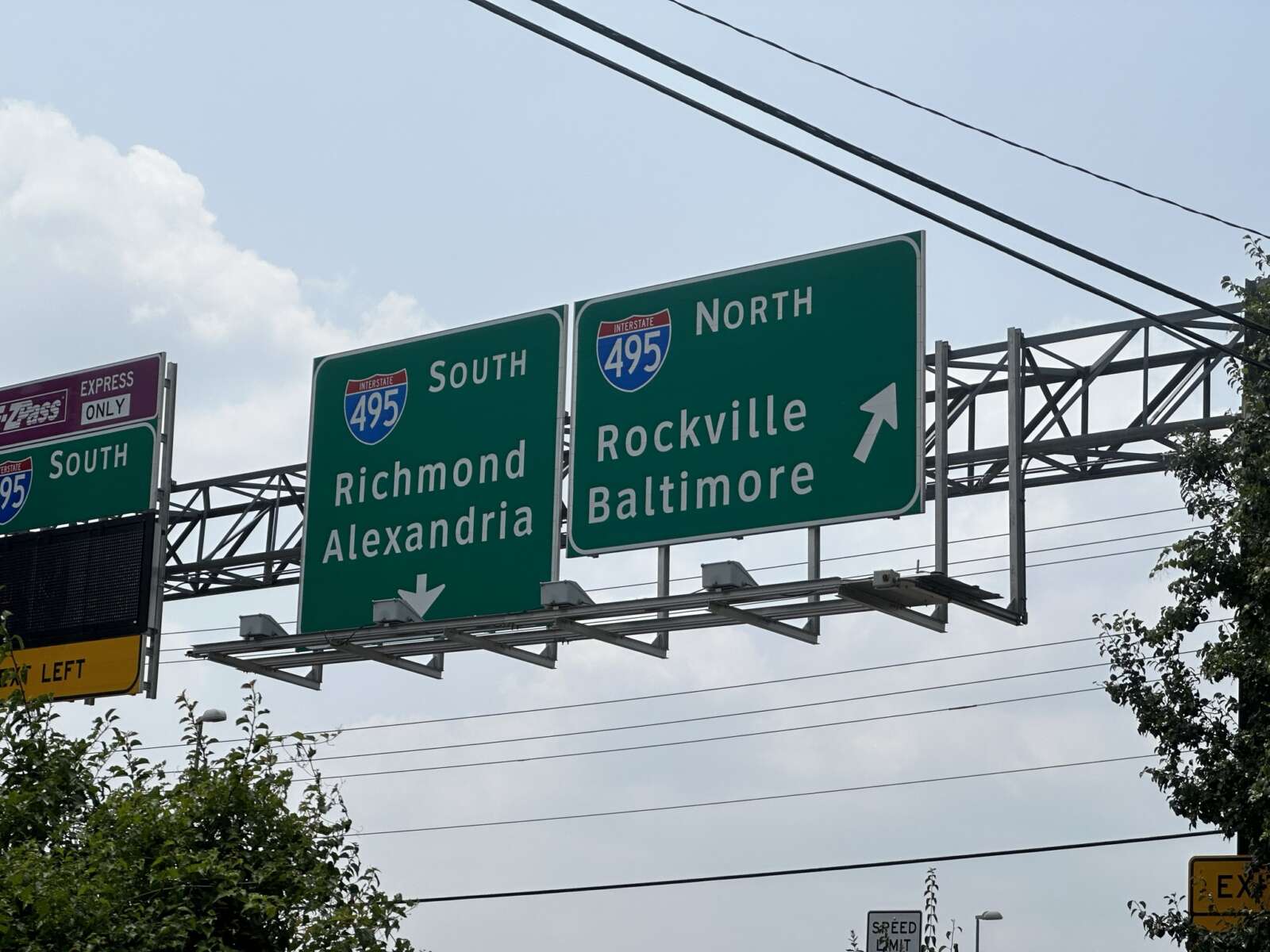
Maryland’s plans for the American Legion Bridge and its side of the Capital Beltway remain a big question mark, but its drivers at least will get a head’s up before they reach the toll lanes now under construction in McLean.
The Virginia Department of Transportation is working with its Maryland counterpart on an agreement that will enable the I-495 Northern Extension (495 NEXT) builder to install signs related to the project on the northern side of the Potomac River.
Six sign structures and accompanying power and communications utilities need to be built in Maryland so the upcoming I-495 Express Lanes can operate correctly, VDOT officials told the Commonwealth Transportation Board (CTB) at its March 19 meeting.
“We need to have signage in Maryland so people approaching our express lanes understand what to do and how it works,” Virginia Secretary of Transportation W. Sheppard Miller said. “…It’s about our cooperation with Maryland to get the things that we need in Maryland done so that our lanes will work appropriately and properly when folks get to Virginia.”
Under the agreement, VDOT and its private partner Capital Beltway Express — a joint venture of the engineering firm Fluor and toll lanes operator Transurban — will install and maintain most of the new signs, which will provide directions for using the express lanes and other messages.
Maryland will be responsible for two guide signs for the interstate’s exits that aren’t related to the express lanes, according to VDOT acting megaprojects director Michelle Shropshire.
The CTB will be asked to authorize VDOT staff to sign the agreement at a meeting in April.
Miller noted that the presentation came just a few days after the two-year anniversary of the official start of construction on 495 NEXT, which will widen 2.5 miles of I-495 from the Dulles Toll Road in Tysons to the George Washington Memorial Parkway in McLean with two express lanes in each direction.
“I remember cutting the ribbon [on] a very chilly morning in Northern Virginia. It was a great day,” he said.
The toll lanes remain on track to begin operating in December 2025, and the overall project is set to finish in May 2026, Shropshire said.
As construction continues to move along, some Fairfax County officials raised concerns last month about a lack of clarity on VDOT’s efforts to coordinate with Maryland and the impact of the road work on McLean residents, commuters and the environment.
Virginia and Maryland’s then-governors Ralph Northam and Larry Hogan announced a $1 billion agreement in 2019 to rebuild the aging American Legion Bridge and expand their respective sides of the Beltway to address traffic congestion. However, public opposition held back Maryland’s toll lanes project, and Transurban pulled out altogether last March.
Maryland signaled that it may pursue a fully public project when it applied for a federal grant in August, and officials held public open houses last fall to get feedback on a proposal that would replace and widen the bridge, along with a portion of I-270.
Last week, a federal judge dismissed a lawsuit from environmental, neighborhood and historic preservation groups seeking to block the potential project, but Maryland’s plans going forward remain unclear.
“This is an important step forward to D.C. area residents who are counting on this project to bring needed congestion relief, better transit service, and improved bike and pedestrian connections in this corridor,” said Jason Stanford, president of the Northern Virginia Transportation Alliance, which supports the toll lanes projects. “Now that this obviously frivolous lawsuit has been dismissed, it’s time for Maryland to move forward with this critical, multimodal transportation improvement for our region.”
Plaintiffs in the lawsuit included the Northern Virginia Citizens Association, a group of McLean residents who also sued VDOT last year over 495 NEXT. Residents along Live Oak Drive in particular have vocally opposed the project, lamenting the loss of trees and other environmental and health impacts.
In recent emails to VDOT officials, some reported that construction has, at times, disrupted their phone, cable and water services.
VDOT will provide an update on 495 NEXT at two public meetings next month: a virtual one on April 8 and an in-person one at Langley High School (6520 Georgetown Pike) on April 11. Both meetings will last from 6:30 to 8:30 p.m.
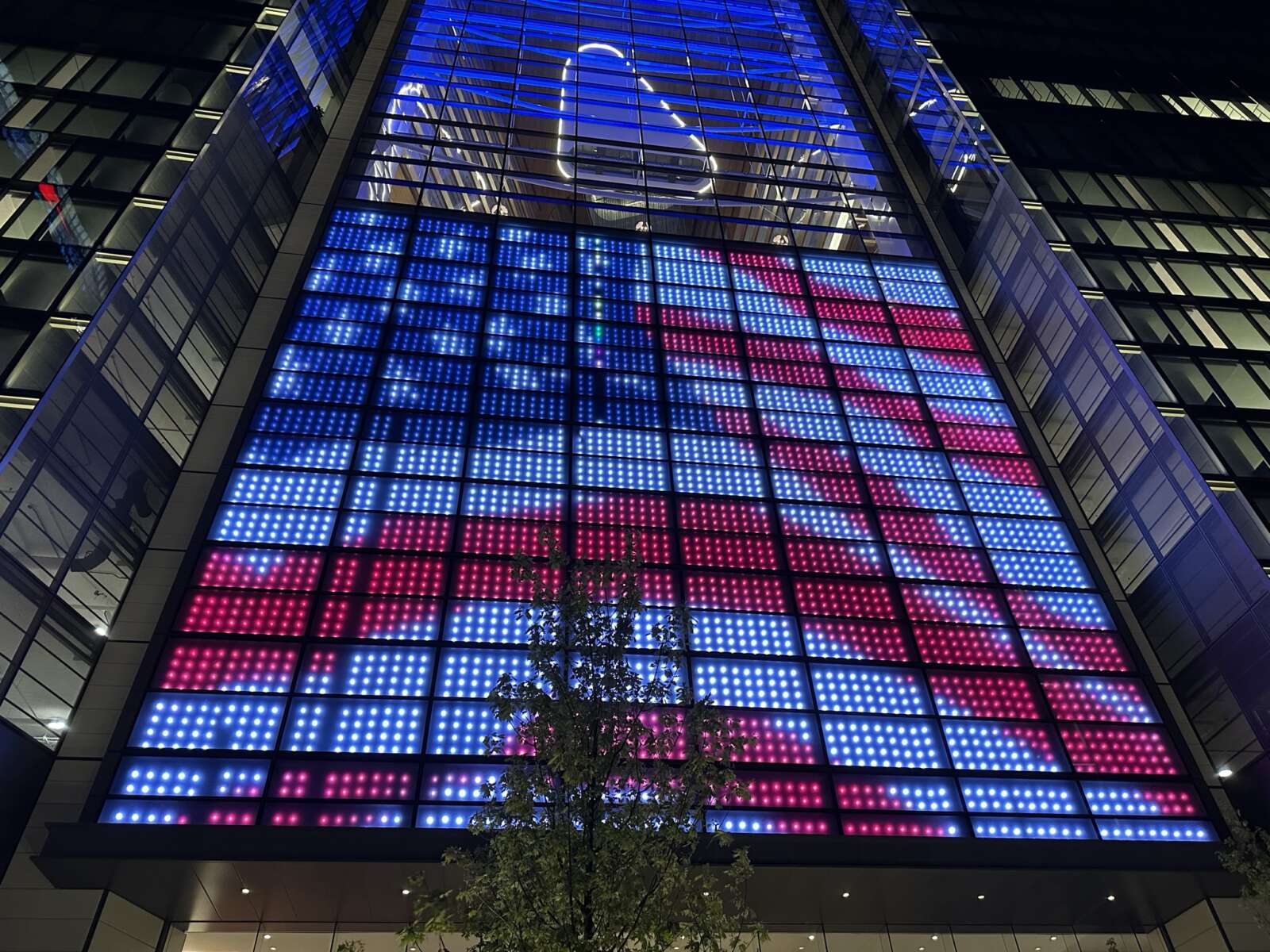
Electronic signs on display at eligible businesses, schools and other establishments can now shine brighter at night.
In planned, commercial and industrial zoning districts within Fairfax County, electronic display signs can now reach brightness levels of up to 300 nits at night, compared to 100 nits previously.
The Board of Supervisors unanimously approved the change to the county zoning ordinance after a public hearing at its Nov. 21 meeting.
“Nits” indicate an object’s brightness. Common cellphones, televisions and computer monitors have nit levels between 250 and 600, according to a county staff report. Under existing county rules, a lot has a designated amount of “freestanding sign area” and may have one electronic display sign that uses up to 50% of that area.
“During outreach on this amendment, we did receive feedback from industry that modern screens are getting brighter, including the widespread use of LED technology,” said Casey Judge with the county’s Department of Planning and Development.
Feedback and research led to county staff’s recommendation to increase the maximum brightness, Judge said.
In residential districts, the maximum nit level will remain 100 nits at night. The 100-nit limit will also apply to any electronic display signs visible to a single-family dwelling within 150 feet of the property with the sign.
Staff had recommended increasing the maximum nit level to 500 nits in planned, commercial and industrial areas in an Oct. 3 report. However, the Fairfax County Planning Commission recommended the ultimately approved 300-nit maximum and the 100-nit maximum for signs located near single-family homes, Judge said.
“I’m not sure 150 feet is the right number, but I think this is one of those things, over time, we’ll probably be getting feedback if it’s too short,” Hunter Mill District Supervisor Walter Alcorn said.
Three community members spoke during the public hearing. Kenny Peskin, a McLean resident who identified himself as an employee of the International Sign Association, said he was “generally in support of the motion,” in particular the version in the staff report with the higher nit limit.
Eileen Kragie, founder of an organization called Dark Sky Friends that advocates against light pollution, spoke against artificial light at night, but called the work “a credible first cut for the electronic signage ordinance.”
Jennifer Falcone called in on behalf of the Great Falls Citizens Association, reporting that the board of the association supported the motions adopted by the planning commission.
Changes to the zoning rules for outdoor signs have been in the works for over a year. Staff presented an initial proposal in May that underwent two public hearings with the planning commission.
Other approved changes include combining three sign application processes and permitting illuminated window signs of up to 4 square feet in non-residential locations.
County staff will provide a report on the implementation of the new guidelines within 18 months.
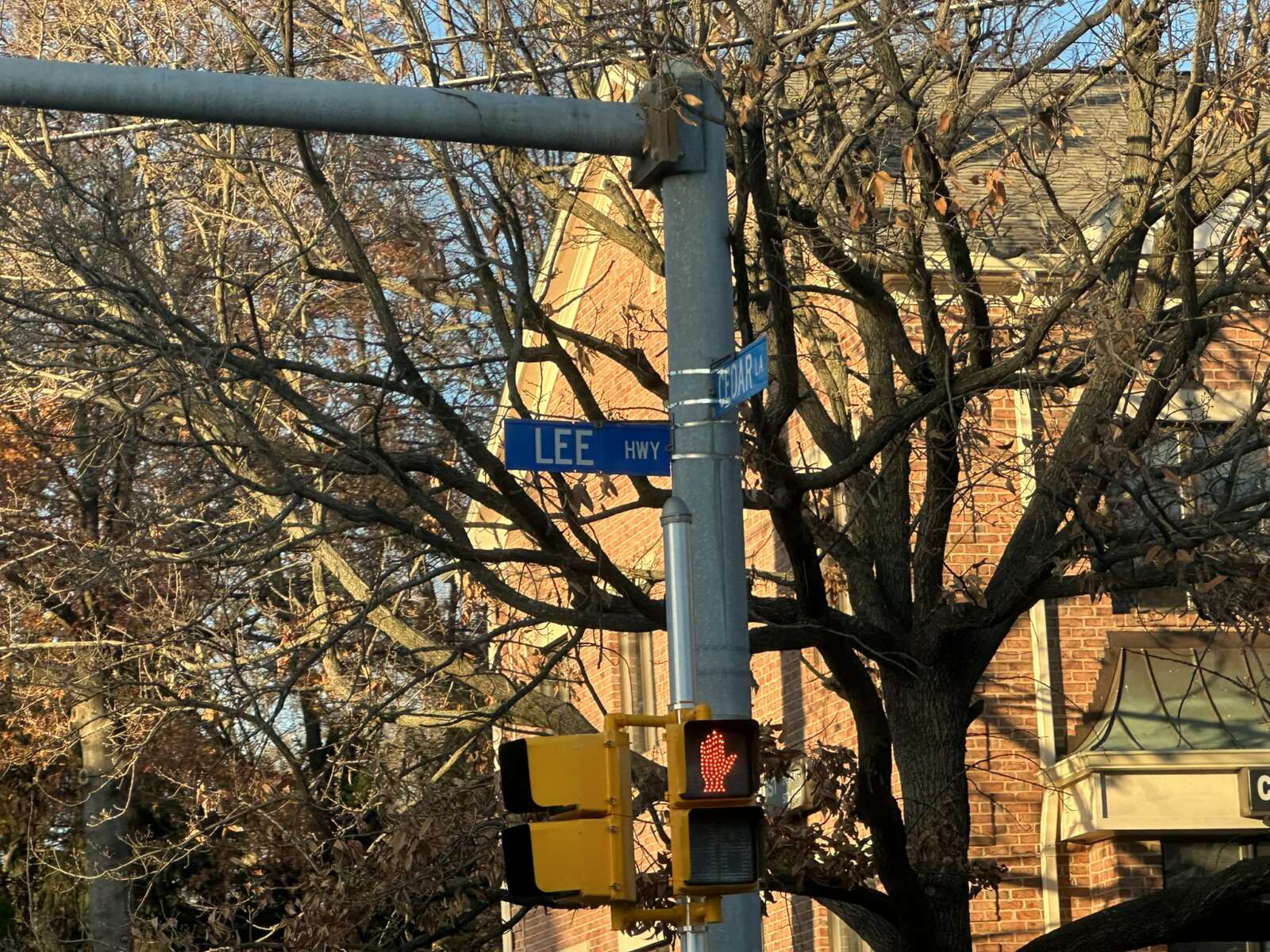
Officially, Fairfax County doesn’t have a Lee Highway or Lee-Jackson Memorial Highway anymore, but months after the names were dropped, they can still be seen on street signs throughout both corridors.
By the end of this month, that should no longer be the case — at least for smaller signs, the Fairfax County Department of Transportation says. A contractor is replacing the small blue signs at street corners with ones identifying the roadways as Route 29 and Route 50, respectively.
“This work is underway, and we anticipate this work to be complete by the end of November,” FCDOT Head of Communications Freddy Serrano told FFXnow.
The process of replacing larger, overhead directional signs, however, isn’t expected to begin until next year.
Getting those signs made and installed will be the Virginia Department of Transportation’s responsibility, though the county is covering all of the costs. A VDOT spokesperson says the department hopes to finalize an agreement with a contractor by the end of this year.
“It will involve 110 signs and it should take about two years to complete from the start of the contract that is anticipated to start in Jan. 2024,” VDOT said by email.
According to Serrano, a preliminary schedule from VDOT estimates that the overhead sign replacements will be finished by the end of 2025.
The Fairfax County Board of Supervisors voted on Sept. 13, 2022 to stop referring to routes 29 and 50 as Lee and Lee-Jackson Memorial, names adopted in the early 20th century as nods to Confederate generals Robert E. Lee and Thomas “Stonewall” Jackson.
Instead of giving the roadways entirely new names, as Arlington County did with its Route 29 segment in 2021, the board opted to use the route numbers to reduce confusion and the cost of new street signs. FCDOT staff previously said changing the signs would be more challenging for longer names.
At the time of the vote, county staff estimated that the sign updates would cost about $1.4 million. It cost about $46,000 for FCDOT’s contractor to fabricate and install the corner street signs, according to Serrano.
“Most of the costs of the sign replacement will be VDOT’s replacement of the larger overhead signs,” he said. “FCDOT will not have an updated cost estimate for that portion of the sign replacement until VDOT begins their preliminary design.”
County staff estimated it would take another $1.5 million to fund grants to help affected property owners cover expenses for updating business licenses, land records and other documents, as recommended by the Confederate Names Task Force that reviewed the proposed renamings.
On its website, FCDOT says the county “is developing” a financial assistance program, but Serrano confirmed to FFXnow that “the proposed grant program for businesses has not been approved at this time.”
The county updated addresses in its records to reflect the name changes, including for property taxes and voter registrations, on July 5.
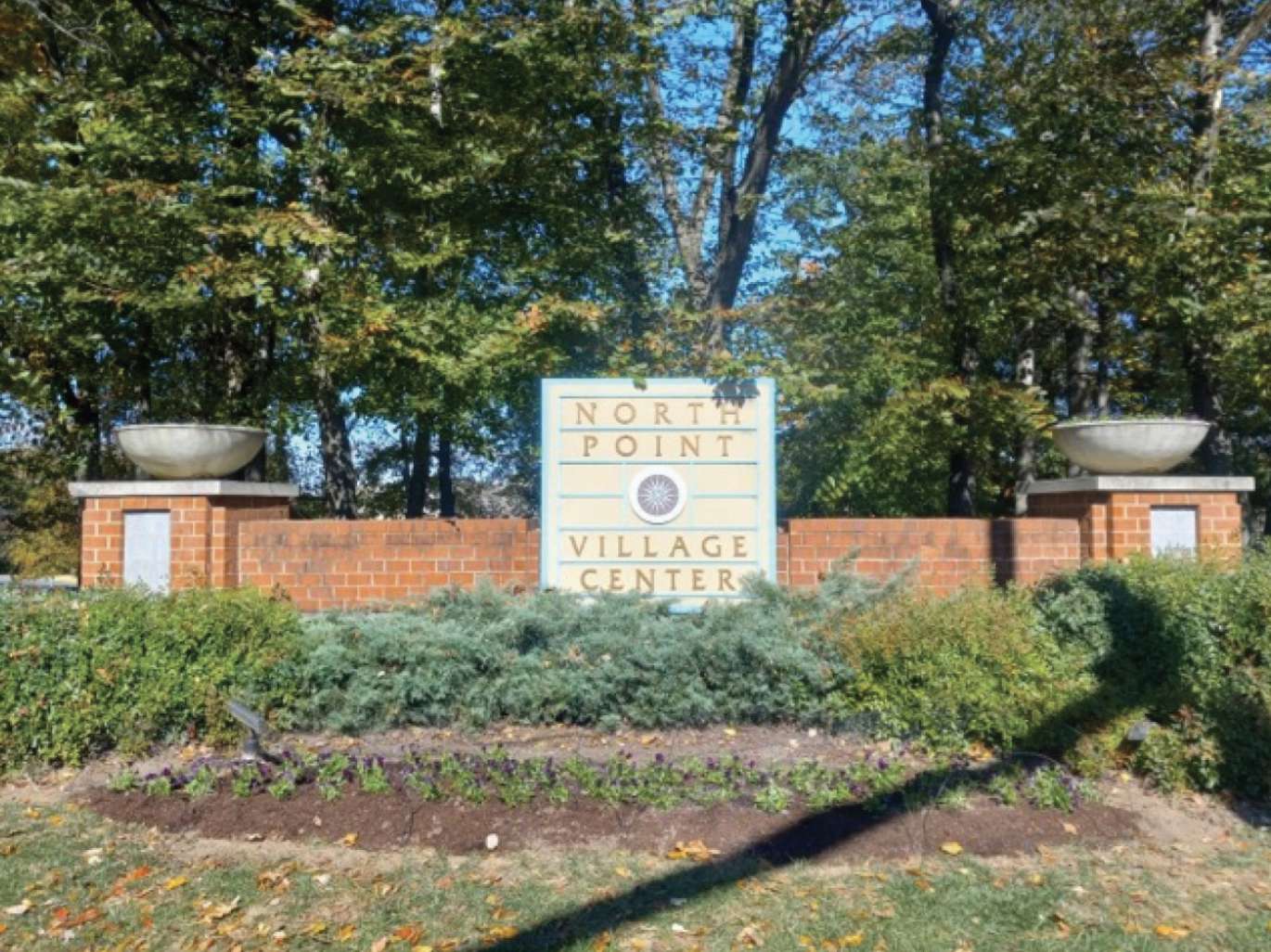
The owner of Reston’s North Point Village Center is exploring ways to make the center more competitive and visible in the community.
Developer Lerner Corporation submitted a proposal to Fairfax County on Oct. 19 seeking its permission to update two monument signs that clearly identify the shopping center and incorporate tenant signage within existing monument signs.
The center at 1452 Reston Parkway is anchored by Giant Food and hosts 27 other suites, including Baskin-Robbins, Chick-Fil-A and Starbucks. But Lerner says the limited visibility to passersby is challenging for those businesses.
“The visibility of these tenants from outside of the center is severely restricted due to the existing, mature vegetation surrounding and within it and the retail tenants being at a lower grade than the surrounding roads,” Connor Breed, a Cooley real estate associate representing Lerner, wrote in a statement of justification for the application.
The new monument signs would identify some of the shopping center’s tenants, which often turn over. The center is also challenged by having only one anchor tenant — a grocery store that must compete with Wegmans, Harris Teeter, Whole Foods and Safeway on or nearby Reston Parkway alone.
“If North Point Center hopes to compete with other local shopping centers, its current lack of clear notification that it includes commercial uses and what tenants are available must be resolved,” the application continues.
The existing monument signs were approved in 1994.
“By bringing North Point Center’s monument signs into line with the expectations of existing and prospective commercial tenants, the shopping center will be better able to serve the needs of Reston’s residents and visitors and will be primed for long-term success,” Breed wrote.
The proposal is in the early stages of the county’s review process and has not yet been formally accepted for review.
The 134,000-square-feet village center is almost fully leased, according to a site plan from Lerner. A Body Fit Training studio is expected to open next year, and one 1,200-square-foot suite designated for specialty retail remains available for leasing.
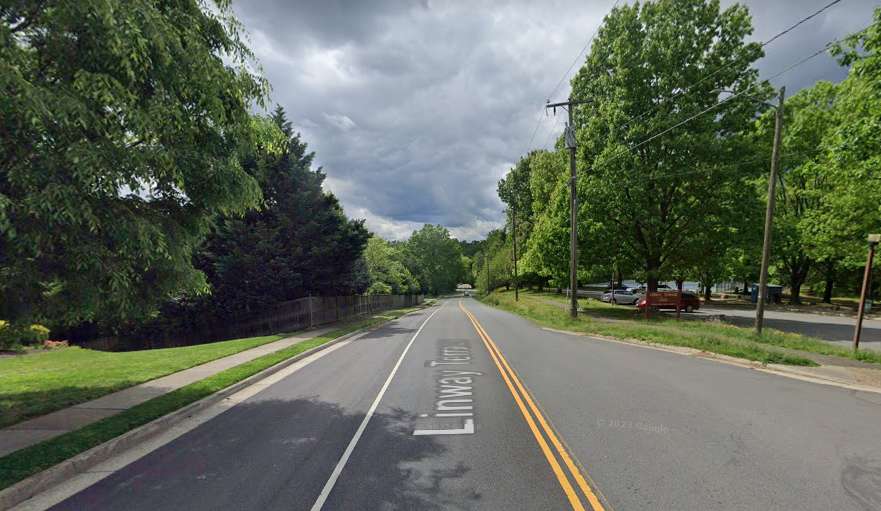
Drivers will now have to pay more if they exceed the speed limit on Linway Terrace in McLean.
The Fairfax County Board of Supervisors gave its support yesterday (Tuesday) to an additional $200 fine for speeding on the residential street between Birch Road and Kirby Road, a half-mile stretch that includes the entrance to Linway Terrace Park (6246 Linway Terrace).
“The Fairfax County Department of Transportation has verified that a bona-fide speeding problem exists on Linway Terrace from Kirby Road to Birch Road,” states the resolution, which was endorsed by the board without discussion.
With the board’s approval, county staff will now work with the Virginia Department of Transportation to install signage notifying drivers of the added penalty.
Virginia authorizes localities to impose an additional $200 fine for speeding on residential streets with an official speed limit of 35 mph or less and “an existing speeding problem,” according to county staff.
The speed limit on Linway Terrace is 25 mph, according to VDOT. However, it’s classified as a “major collector road,” per the resolution, providing an alternative route between Kirby Road and Old Dominion Drive.
According to county staff, Dranesville District Supervisor John Foust’s office confirmed to FCDOT on July 14 that the additional fine has community support. The new road signs will cost $500 total, an expense that will come out of VDOT’s secondary road construction budget.
The 10-acre Linway Terrace Park features soccer and lacrosse fields, tennis and basketball courts and a playground. The Fairfax County Park Authority approved a $20,000 grant contribution in July to support a project by the McLean Little League to convert the park’s baseball field into artificial turf.
Image via Google Maps
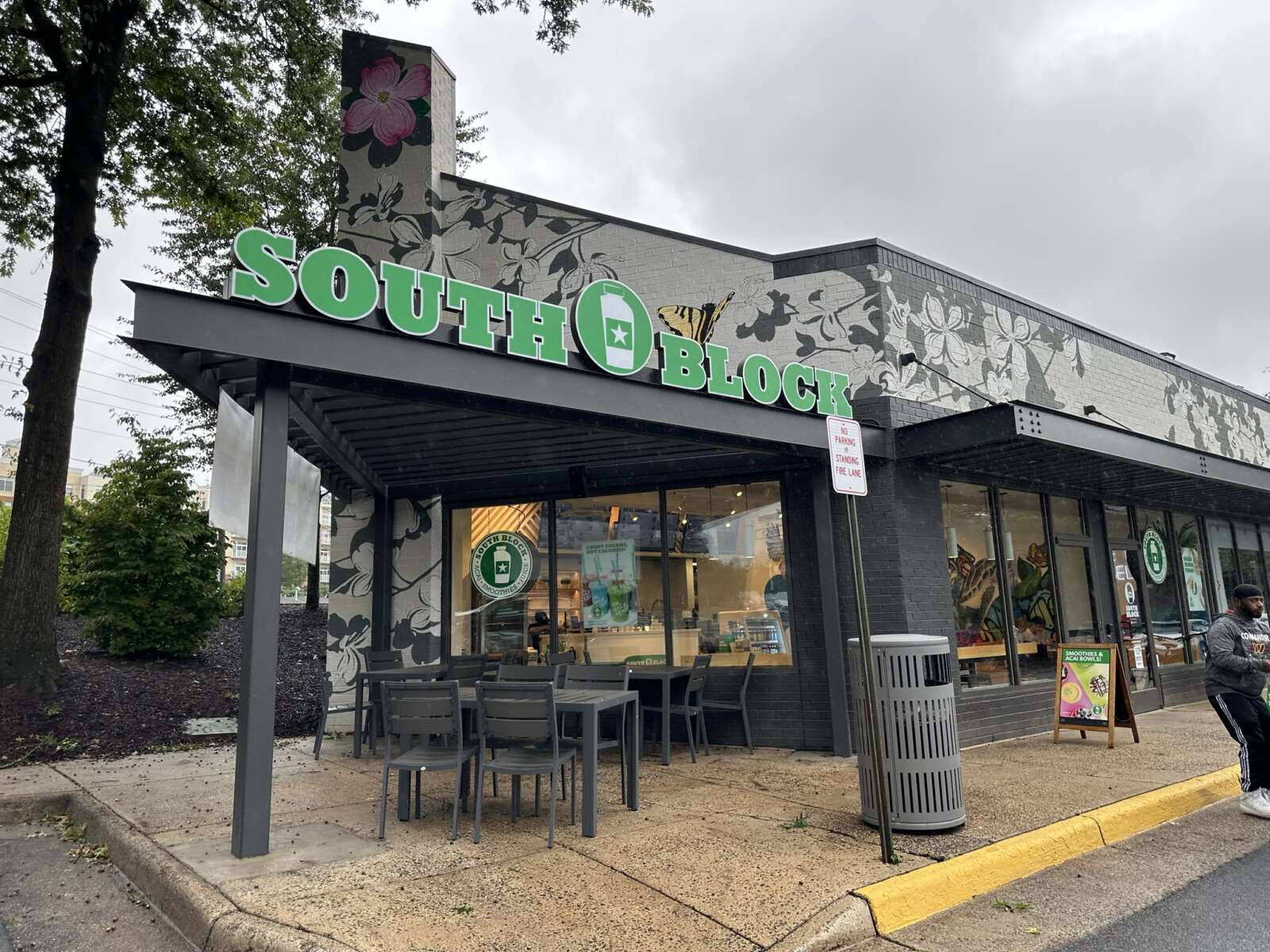
The new signs planned for Chesterbrook Shopping Center in McLean won’t point to their corresponding businesses with big, flashing arrows, but that’s essentially the effect property owner Federal Realty hopes to achieve.
The developer got the Fairfax County Planning Commission’s support on Sept. 14 for a special exception that would allow more signage space at the shopping center on Old Dominion Drive.
Specifically, Federal Realty hopes to add signs on the back of the building at 6242 Old Dominion Drive that’s occupied by the recently opened South Block, Chesterbrook Barber, Chesterbrook Cleaners, Kosmo Nail Bar and Potomac Pilates.
“The application is to create better identification for the tenants of this building and ultimately supporting the enhanced viability of those buildings,” McGuireWoods land use planner Mike Van Atta told the planning commission as the developer’s representative.
Located at the western corner of the shopping center, the building currently only has signage across its front, facing the parking lot. Its rear facade faces Old Dominion Drive, backing up against an elevated drive-thru for the TD Bank in neighboring Chesterbrook Plaza.
That elevation puts tenants in the building at a “disadvantage,” making it difficult for passersby to see their signage, county staff said.
The waiver requested by Federal Realty would double the amount of space permitted for signage from just under 202 square feet to almost 404 square feet.
“There’s limited visibility for the subject building, given that it’s located on the curve of Old Dominion Drive and because the building is oriented with the front of the building facing away from the street and below the grade of the main right-of-way,” Van Atta said. “So, these collective circumstances create a special and unique challenge for the tenants of this building.”
He added that the property owner worked with county staff to ensure the proposed building-mounted signs are “appropriately located, sized and lighted to not have any adverse impacts on adjacent uses.”
The special exception application will go to the Board of Supervisors for a public hearing and vote on Oct. 24.
More tenants on the way?
The sign revisions are part of an $8.5 million renovation of Chesterbrook Shopping Center that has been underway since last fall. Storefront and facade updates are expected to finish this year, and new outdoor amenity spaces will be completed in 2024, according to Federal Realty.
After emptying in the lead-up to the renovation, the shopping center has been gradually filling its tenant roster back up. Recent additions include the clothing store J. McLaughlin, home decor outlet Le Village Marché and a food truck from the popular deli Call Your Mother.
The only confirmed upcoming tenant right now is a Small Door Veterinary clinic, but a merchandising plan on the shopping center’s website suggests a leasing deal is in the works with Bluemercury.
According to the brochure, the cosmetics company has a letter of intent to lease 2,236 square feet in between the Tutoring Club of McLean and a 1,405-square-foot, brick-and-mortar storefront for Call Your Mother. Bluemercury didn’t respond to a request for comment.
The merchandising plan also shows several vacant spaces being designated for restaurants, a salon and an apparel store. The building where Call Your Mother’s truck is currently parked appears to be destined for a bank.
The property owner didn’t comment on the merchandising plan, but it confirmed Starbucks is renovating its coffee shop. Starbucks didn’t return an inquiry from FFXnow by press time.
“Federal Realty is actively transforming Chesterbrook and will have additional new store announcements over the upcoming months,” Senior Vice President of Asset Management Deirdre Johnson said. “The positive response from the community as it frequents our newly opened stores is amazing. Look for Starbucks to complete an in store renovation the first of 2024.”
Hat tip to Mike Whatley
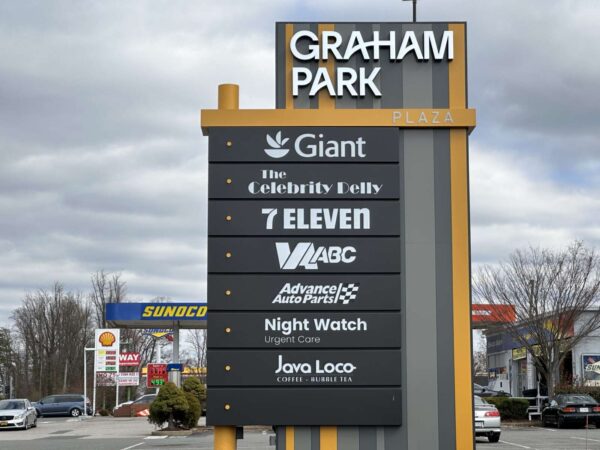
Fairfax County is looking into adjusting its signage rules to allow for brighter and bigger electronic signs.
Casey Judge with the county’s Zoning Administration Division presented the proposed changes during a Board of Supervisors land use policy committee meeting on May 16.
The changes include increasing the maximum brightness for nonresidential districts to 300 nits (a unit that measures the brightness a sign is emitting) at sunset. Current regulations require electronic signs to automatically dim to 40-100 nits at sunset.
The changes also includes requiring sign permit applicants to submit sign specifications.
In addition, the three existing application processes that the county currently has for nonresidential areas could be consolidated into one process.
“This does mean that all sign applications would go to the board for approval rather than the current [comprehensive sign plans],” which only need to be approved by the Fairfax County Planning Commission, Judge said.
Proposed modifications for electronic display signs with special exceptions include increasing the number, height, and size of freestanding signs, allowing building-mounted electronic display signs, and increasing the brightness to 600 nits.
Last May, while discussing the matter, county staff told the committee that the existing rules are old and that businesses wanted to be more competitive. Judge also suggested that easing the application process could be helpful to businesses.
Hunter Mill District Supervisor Walter Alcorn, the committee’s vice chair, questioned how the county is handling the convergence of “what’s a sign and what’s a display.”
“These things that we have traditionally dealt with as signs are being used in other means, or for other purposes,” Alcorn said.
Judge said a standard has been added that focuses on traffic safety and overall placemaking effects as part of the electronic display signs.
“I do hope that that standard can help guide our staff when they’re making that analysis to ensure that we’re looking at size and location, more so than the content in making our recommendations,” Judge said.
Braddock District Supervisor James Walkinshaw questioned the proposed increase from 100 to 300 nits, which he called pretty significant.
“That’s really in response to research looking at other jurisdictions that have much higher nit level limitations and it allows for those higher definition screens that we’re seeing,” Judge answered.
Judge said the county is seeking authorization and public hearings later this year.
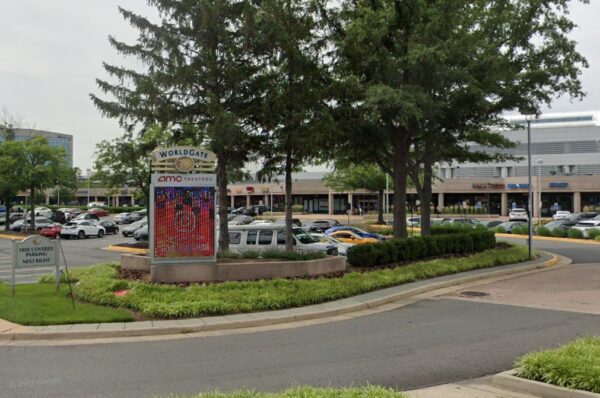
A new sign plan aimed at creating uniformity in Herndon’s Worldgate Centre has been put on hold.
At a work session public hearing before the town’s Architectural Review Board last night (Wednesday), town staff indicated that the property owner intends to withdraw the plan because of the town’s efforts to adopt Uniform Sign Standards.
“The applicant’s agent has indicated their intention to withdraw this application given the adoption of the Uniform Sign Standards, however, a formal withdrawal has not been received at this time,” Tamsin Homes, a lead planner with the town, said in a May 3 memo.
The owners of Worldgate Centre submitted an application in March to create additional design criteria with a new master sign plan.
“The applicant proposes to amend the current master sign plan to accurately reflect the location and size of existing tenant spaces within the shopping center and provide updates sign area allocations for each respective tenant in accordance with each tenant space,” the application said.
In a Feb. 22 memo, the applicant stated that the plan allows the center to get revamped and refreshed signage that will “ultimately improve and enhance the quality of this prominent shopping area in the Town of Herndon.”
A formal withdrawal request has not yet been made.
Image via Google Maps
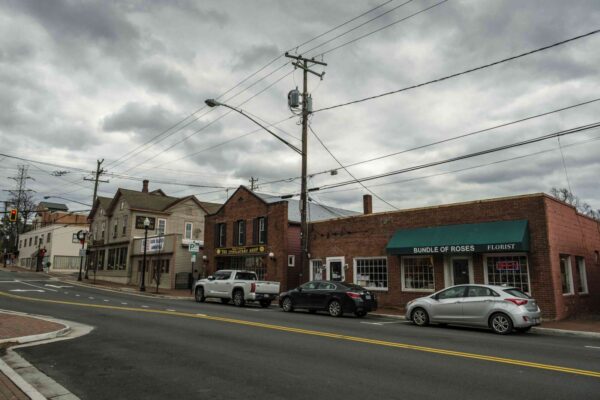
The Town of Herndon is instituting uniform sign standards in an effort to manage consistent design that fits its character and architectural context.
The proposal, which was adopted by the Historic District Review Board yesterday (Wednesday), would also streamline the number of cases that go before that board and the town’s Architectural Review Board.
“These standards give direction on the ways in which signage can serve practical needs while contributing to Town character and appearance,” the new design standards say.
Specific standards laid out for the town’s Historic District Overlay area say signs should typically follow a consistent design palette and ethic. The rules also discourage the use of standardized designs and colors that clash with the overall aesthetic of buildings.
“Creative and artistic designs are encouraged to enhance liveliness and visual interest,” the design standards say.
The guidelines also detail considerations for projecting signs, wall signs, free standing signs, canopy signs and awning signs. Similar standards are considered for the town’s Architectural Control District.
At a previous work session, board members said the design standards were too broad and not restrictive enough.
But in a March 15 memo, Herndon Deputy Director of Community Development Bryce Perry said that the board did not provide additional comments on possible changes.
“Staff is open to suggestions on how to add further specific to the standards,” Perry said, adding that additional specificity is included in other documents like the downtown pattern book.
He said the guidelines are crafted “purposefully to cover broad design considerations that could be applied to all sign cases.”
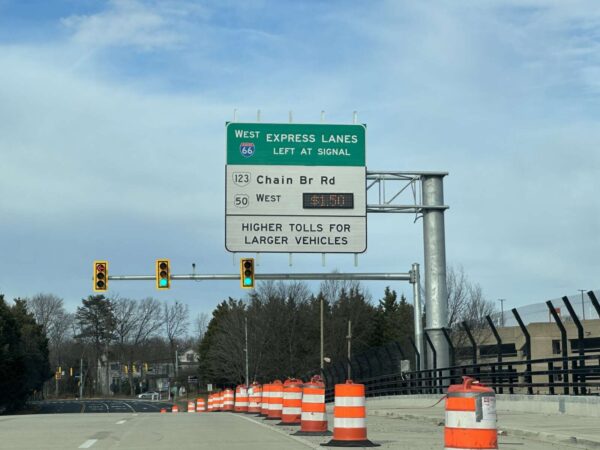
The toll lanes on I-66 outside the Capital Beltway have been open for over three months now, but some drivers are still getting tripped up by the accompanying signage.
The Fairfax County Board of Supervisors directed staff on Tuesday (March 7) to prepare a letter asking the Virginia Department of Transportation to clarify the information on its signs about toll prices and exit locations.
Springfield District Supervisor Pat Herrity, who requested the move, said his office has continued to receive complaints from confused constituents.
“The signage used on these newly opened Express Lanes is not as clear as the signs on I-495 and I-95 Express Lanes,” Herrity said. “The signage does not provide total cost information for the entire length, and it does not give clear information to drivers on locations of exit ramps to general purpose lanes, which is important for drivers deciding whether to pay additional tolls.”
Covering 22.5 miles from the Beltway (I-495) in Dunn Loring to Route 29 in Gainesville, the westward extension of the I-66 Express Lanes became fully operational on Nov. 22, though portions of the overall $3.7 billion project are still under construction.
The signage was developed in accordance with federal guidelines and approved by the Federal Highway Administration, but both VDOT and I-66 Express Mobility Partners (I-66 EMP), the private company that operates the toll lanes, acknowledged that this is “a learning period” as drivers adjust to new signs and traffic patterns.
“We are looking at areas in the corridor where we might enhance or clarify the signage in an effort to help drivers,” VDOT Northern Virginia’s megaprojects section said in a statement.
Because of their length, the new lanes are split up into three eastbound segments and four westbound segments, charging drivers for each segment they take. Signs for the lanes currently show only toll prices for specific sections, rather than the whole corridor.
Nancy Smith, the corporate affairs director for I-66 EMP, says the operator is “aware” that this approach “may present particular confusion” at spots like the I-495 interchange that are complicated to navigate, but it’s ultimately more effective.
“This system provides our drivers with the most accurate rates as well as greater flexibility to determine when to get on and off the lanes,” Smith said. “An end-to-end rate wouldn’t accurately reflect conditions in the furthest segment by the time a driver gets there. Again, it will take time for all drivers to completely familiarize themselves with our segmental tolling system.”
According to I-66 EMP, the average weekly toll lanes usage increased from about 3% to 5% of I-66 users over the past month, suggesting drivers becoming more accustomed to the lanes.
“That’s a very encouraging growth trend,” Smith said.
I-66 EMP has an online trip planning tool that provides toll estimates. Its customer service center at 1-833-643-2867 will also answer questions, Smith said.
Despite his concerns about the signage, Herrity called the I-66 Express Lanes project an “impressive feat” that provides new transportation choices and “a quicker commute due to the additional capacity from the toll lanes.”
“I thought a letter from the board might help VDOT encourage the contractor to get that signage done,” Herrity said.

